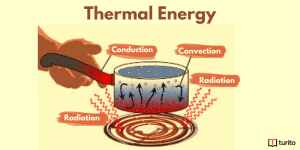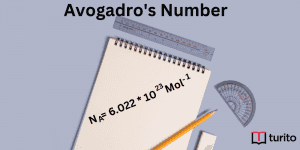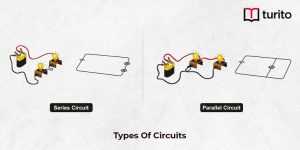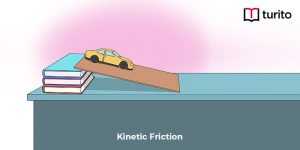What is a Circuit?
The closed-loop electric circuits or routes create a web of electrical parts through which electrons can move. This walkway is built with electrical lines and is powered by a battery or another source. The point where the electrons enter the electrical circuit is known as the source, and the point where they depart is known as the return.
Electric Circuit Symbols
A symbol is present in every electrical circuit component and output. In a circuit diagram, the characters stand in for various circuit components. The standard set of symbols included in a circuit diagram is shown below.

How do we Measure Electric circuits?
Basic circuits with few components are often straightforward to grasp for novices. However, when other elements join the party, things get trickier.
Where will the current go? These are the critical inquiries that need to be made in this situation. What would occur if the voltage? Is it possible to simplify for better understanding?
By using circuits with the most fundamental of components, batteries and resistors, the first topic to discuss is the distinction between parallel circuits and series circuits. The difference between the two setups would undoubtedly become apparent in this situation.
After that, electric circuit is necessary to investigate what occurs when different component types, such as inductors and capacitors, are combined in series and parallel circuits. A series circuit is one in which the resistors are arranged in a chain, requiring the current to follow just one channel. Additionally, each resistor experiences the same current. Further, by summing the resistance values of each resistor, one may get the circuit’s overall resistance.
A parallel circuit is one in which the resistors are arranged with their tails linked to one another and their heads connected. Additionally, by summing the reciprocals of the resistance values, one may get the overall resistance of a group of parallel resistors. The amount must then be multiplied by itself to get the reciprocal.
Electric Circuit Formula
Requirement is defined as Req = R1 + R2 + R3 +.
Additionally, the parallel circuit formula is 1/Req = 1/R1 + 1/R2 + 1/R3 +….
Where,
Req is equal to the combined resistance of the series-connected resistors.
R1, R2,… are series-connected resistors.
Simple Circuit
The load, switch, wires, and power supply makes up a short circuit.
- It is the power source, the cell.
- The resistor is often referred to as the load. When the circuit is turned on, a lightbulb inside of it illuminates.
- Conductors are composed of bare copper wires. The load is linked to the cable’s power source at one end, and the power source is connected to the pack again at the other end.
- Switch: The circuit has a little gap there. Switches come in a variety of varieties. To open or close a course, use a control.
Derivation of the Electric Circuit Formula
Regarding series resistors:
The current I across the circuit is determined by Ohm’s Law when a single resistor is connected to a course with a voltage source V:
Ohm’s Law: I = V / R
Let’s now examine what occurs when we connect the second resistor in series. Additionally, series implies that the resistors function sequentially, like chain links. Further, we can refer to them as the resistors R1 and R2.
Due to the resistors’ connection, the voltage source V causes the identical current I to flow through each of them.
According to Ohm’s Law, a circuit with resistance R and voltage V would be as follows:
I = V / R
Consequently, allowing the equation to be rearranged by multiplying both sides by R
V = IR
therefore, for resistor R1,
V1 = IR1
together with resistor R2
V2 = IR2
V – V1 – V2 = 0
arranging new arrangements
V = V1 + V2
Additionally, replacing the previously computed V1 and V2
V equals I(R1 + R2), or I(IR1 + IR2).
by I, dividing both sides
V / I = R1 + R2
However, we now understand that V / I = total circuit resistance thanks to Ohm’s Law. Additionally, let’s name it Total.
Therefore,
Total R = R1 plus R2
Additionally, Total = R1 + R2 +…… Rn
To get the overall resistance of resistors linked in series, one must sum up all the values.
When using parallel resistors:
The circuit’s resistors all contain the entire voltage. Ohm’s law states that the currents flowing through each resistor are I1 = V/R2, I2 = V/R2, and I3 = V/R3. Also, charge conservation suggests that the overall draft is the Sum of these individual currents.
I= I1 + I2 + I3.
The results of substituting the formulas for individual currents are as follows:
I equal V/R1, R2, and R3.
Or
I = V (1/R1 + 1/R2 + 1/R3)
This suggests that the overall resistance of a parallel circuit equals the sum of its components’ inverses. Consequently, for any course that contains n resistors connected in parallel,
Rn = 1 / R1 / R2 / R3… + 1 / Rn.
Series – Parallel Circuits
However, we won’t be able to apply a single set of rules to every section of that circuit if circuit components are linked in series in Series – Parallel Circuits in others. Instead, to figure out what is occurring, we must first discover what is in series with one another and which are in parallel. Consider the course shown below:
A Series – Parallel Circuits Diagram

We may examine the circuit in phases, tackling each component one at a time and using the proper rules to ascertain the correlations between voltage, current, and resistance if we can establish which circuit components are in series and which are in parallel.
Electrical panel box
An electrical panel box, also known as a breaker panel, is a metal box with a door often incorporated into a wall in a particular area of your home, in which all of your home’s breaker switches are placed inside.
Who may turn on and the breaker switch off? They are designed to shut off automatically when too much electrical current flows through them.
A primary circuit breaker in the electrical panel box regulates the electricity to the house. Additionally, you’ll see various breakers, each in charge of supplying energy to a different area of your house. The home’ section that each breaker switch regulates should be noted on the device’s label for a constant check.
Frequently Asked Questions
1. What does “circuit electric” mean?
A electric circuit is a closed loop that allows current to flow. A channel that makes it possible for electric current to be transmitted is sometimes referred to as a circuit electric.
2. Two 100k resistors are linked in series with five 10k resistors. The total resistance is what?
Megaohms (abbreviated as “M”) and kiloohms (abbreviated as “k”) are often used to specify resistor values.
One kilo-ohm (1k) equals 1000 ohms, or 1 x 103.
One megaohm, sometimes known as 1M, is equal to 1,000 000 ohms, or 1 x 106.
It would be preferable if we expressed the values in scientific notation to simplify further the mathematics required.
In a series electric circuit, the sum of all resistances equals total resistance.
= 5 x (10k) + 2 x (100k)
= 5 x (10 x 103) + 2 x (100 x 103)
= 50 x 103 + 200 x 103
= 250 x 103 equals 250k
3. What is a “short circuit”?
A “short circuit” is an erroneous connection with meagre resistance, such as a wire with nearly zero resistance, offering an effortless channel for electricity. Consider it a shortcut in the electrical system. Instead of a planned connection, it is typically used to indicate a flaw or an accidental link.
For instance, we say a battery has experienced a short circuit if the leads from two batteries come into contact and form a connection with meagre resistance. Instead of passing the correct circuit, the current will travel through this short circuit. As a result of a significant current running through the leads and batteries, this inhibits the circuit from functioning and may start a fire.
4. Why does my circuit count three or four after only one switch press?
This is likely to occur if a switch is linked directly to a counter’s clock input. When a button is closed, its contacts frequently bounce open and closed, creating an output similar to the one shown in the diagram. The counter interprets this as many clock pulses rather than the anticipated single pulse. One method is making the switch activate a monostable circuit with a quick time constant (like 0.1s) and using this to drive the clock input.
5. What are examples of simple circuits?
A battery (or another energy source), a light bulb (or another energy-consuming device), and conducting wires that link the two terminals of the battery to the two ends of the light bulb make up a simple circuit.
6. What is a power circuit?
How rapidly an electrical power circuit element transforms energy is determined by its power. Some components in a circuit give power (that is, they change energy into the electrical form).
In contrast, other parts absorb power (i.e. convert energy from electrical energy into some other format), which is called a power circuit.

Relevant Articles
Understanding Thermal Energy: What It Is and How It Works
Thermal energy is essential to our daily lives, from warming …
Understanding Thermal Energy: What It Is and How It Works Read More »
Read More >>Avogadro’s Number: Meaning, Importance, and More
Introduction The concept of measuring the microscopic particles that make …
Avogadro’s Number: Meaning, Importance, and More Read More »
Read More >>Kinetic Friction – Definition, Laws, Types
Kinetic Friction Kinetic force is a force acting between two …
Kinetic Friction – Definition, Laws, Types Read More »
Read More >>




















Comments: